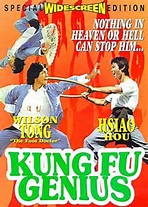Stephen King’s It was one of my favorite books as a
teenager. I would even read it every
year just before October to get me in the mood for Halloween. I’m also a big fan of the 1990 TV movie
starring Tim Curry, so it goes without saying that my expectations for director
Andy Muschietti’s new version were lofty.
Sadly, it’s only half a great film.
The stuff I loved, I loved dearly. The Losers Club, the team of youngsters who
band together to fight the evil clown Pennywise (Bill Skarsgard), were all
perfectly cast. Every pre-teen in the
film was amazing, but for me, it was the foulmouthed Richie (Finn Wolfhard) who
was the standout. (Although that’s
probably because he reminded me so much of myself.) Beverly (Sophia Lillis), the lone girl of the
club, proved she was the boys’ match in every way and Lillis’ performance shows
that she is a star in the making.
The scenes of the Losers riding their bikes around town,
standing up to bullies, and coming together to face the monster were expertly
crafted. Usually, in a horror movie, you
can get away with having thin characters and poor craftsmanship if the scares
are there. Unfortunately, the opposite
can be said for It. It’s a superbly put
together film filled with great performances, but the one performance the
entire picture hinges on is so bad that it nearly sinks the whole enterprise.
I’m talking of course about Bill Skarsgard’s Pennywise. I loved the opening scene where Georgie has
to find something in the basement and is menaced by what appears to be two
glowing eyes that turn out to be nothing more than two lightbulbs sitting on a
shelf. This is unfortunately the
scariest part of the whole film and is way spookier than anything Skarsgard can
come up with.
First of all, Skarsgard sounds like the goddamned
Leprechaun. I don’t know who thought
this was a good idea, but they should’ve been fired on the spot. Every time he opened his mouth all I could
think of was Warwick Davis. (Actually,
Davis wouldn’t have made a bad Pennywise.)
Secondly, he looks like he can’t wait to devour the kids, which is a
huge miscalculation. He should represent
something wholesome to lure the kids in, and then turn evil when it’s too late
to turn back. If you start off with him
being evil, there’s nowhere for the character to go. The only thing you can do is give him even
more teeth (which they do, and it doesn’t work at all).
The design of the new Pennywise was another
miscalculation. When I saw the first
images of the costume online, I felt that something was off. As it turns out, my gut instinct was
right. The problem is they tried way too
hard to make him look “scary”. Don’t the
filmmakers know that a regular clown is creepy enough to begin with? It reminds me of that Teen Titans Go episode
when Beast Boy and Cyborg try to make clowns “extreme”.
Muschietti goes overboard with all the jump scares, high
pitched screams, and sped-up fast motion monsters. The monsters themselves are pretty
crappy. There’s a headless guy and a
pus-spewing leper, and both of them suffer from poor CGI.
The children’s fears are weak too. Hands, a painting, a doll that looks like it
came from Monster High, and a clogged sink all act as harbingers of doom. This is It we’re talking about. It should be shit-your-pants scary. This feels like some Goosebumps stuff. If only Muschietti could continually recapture
the feeling of that early basement scene, this would’ve been a bull’s eye. Too bad the rest of the scary set pieces land
with a thud.
There is one area in which the film improves on the
original: The final confrontation. Instead of having just a cheesy spider,
Pennywise transforms himself into various things while fighting the
Losers. While this is an improvement, it’s
still nothing to get all worked up about.
Another stumbling block is that we’re really only being shown
half a movie. This one focuses solely
on the kids fighting It while the sequel will focus on them as adults having to
confront It again. Maybe my feelings
will change when I see both halves together as one whole, but until then, the
film just feels incomplete.
There’s a part of me that wishes I could edit all the “scary”
stuff out of the movie and repackage it as Stand By Me Too.
In the end, this is an OK Stephen King adaptation. It is a movie that is in many ways slightly
superior to Pet Sematary 2. It is,
however, no Maximum Overdrive.

















